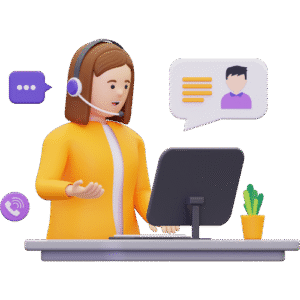An angry customer can be your greatest opportunity. This guide reveals 5 proven, step-by-step techniques to de-escalate conflict, solve problems effectively, and transform frustrated customers into your most loyal brand advocates.

That all-caps email. The one-star review notification. The frustrated voice on the other end of the line. For any business owner, an angry customer can feel like a crisis. The immediate instinct is often to get defensive, to correct them, or to simply wish the problem would go away.
But what if we told you that this moment of high tension is actually your single greatest opportunity?
A customer who has had a problem is paying attention. They are engaged, albeit negatively. This is your chance to demonstrate your company’s true character and commitment to service. When handled correctly, you can not only solve their problem but also convert their frustration into deep, lasting loyalty.
This guide breaks down the 5 proven techniques that expert support professionals use to de-escalate conflict and turn angry customers into lifelong fans.
The Foundational Mindset: It’s You and Them vs. The Problem
Before you type a single word or say hello, you must adopt the right mindset. The goal is not to “win” the argument or prove the customer wrong. The goal is to solve the problem together. Shift your perspective from “me vs. you” to “us vs. the issue.” This simple mental change will guide every action you take.
The 5 Techniques to De-escalate and Delight
Technique 1: Listen Actively, Don’t Just Wait to Talk
An angry customer needs to feel heard. Your first and most important job is to listen. This means more than just staying silent while they talk. Active listening involves:
- Letting them vent completely without interruption.
- Taking notes on the key facts of their issue.
- Asking clarifying questions once they’ve finished, like, “So, if I understand correctly, the issue began when X happened. Is that right?” This shows you were paying attention.
Technique 2: Acknowledge Their Feeling and Empathize Sincerely
Once a person feels heard, they need to feel understood. Before you jump to a solution, you must validate their emotion. This is the most powerful de-escalation tool you have. Use sincere, empathetic phrases like:
- “I can completely understand why you’re frustrated by this.”
- “You have every right to be upset. I would be too in your position.”
- “Thank you for bringing this to our attention. I realize this has been a very frustrating experience for you.”
Technique 3: Apologize and Take Ownership
An apology is not necessarily an admission that your company was wrong. It is an expression of regret for the customer’s negative experience. Taking ownership builds a bridge of trust.
- Say: “I am truly sorry for the trouble and frustration this has caused you.”
- Avoid defensive language like “but” (e.g., “I’m sorry, but…”).
- This simple act shifts the dynamic from adversarial to collaborative.
Technique 4: Solve the Problem and Offer a Fix
Now that the emotion has been de-escalated, you can focus on a solution.
- Involve them in the solution: Ask, “What would a perfect resolution look like for you?” This gives them a sense of control.
- Propose a clear plan: If you have a solution, state it clearly. “Here is what I am going to do for you right now…”
- Offer a “make-good” gesture: If appropriate, go one step beyond just fixing the problem. A small discount on a future purchase, a month of free service, or a partial refund can turn the experience from “fixed” to “fantastic.”
Technique 5: Follow Up and Close the Loop
This is the final step that 99% of companies forget, and it’s what creates a true fan. A day or two after the issue has been marked as “resolved,” have the same agent send a brief, personal follow-up.
- Example: “Hi [Customer Name], this is [Agent Name] from [Your Company]. I just wanted to personally check in and make sure the solution we provided is still working perfectly for you. Please let me know if there’s anything else at all I can help with.”
- This shows you genuinely care about their long-term satisfaction, not just closing a ticket.
The TelTalk Difference: Expertise in Action
These techniques are powerful, but they require significant training, patience, and emotional intelligence—resources a busy founder can’t always spare.
At TelTalk, this is what we do every day. Our agents are not just fluent in 9+ languages; they are experts in the universal language of empathy and problem-solving. We build teams that are trained to be efficient, confident, and skilled in handling objections and difficult conversations. We turn your toughest support challenges into your biggest relationship-building opportunities.
Ready to have a team of experts turning your customer frustrations into loyalty? Contact TelTalk today and learn how our dedicated CX teams can protect and grow your brand.
























